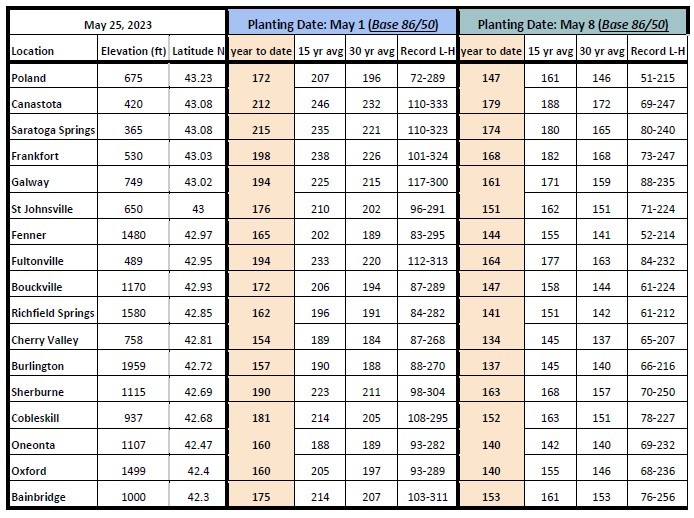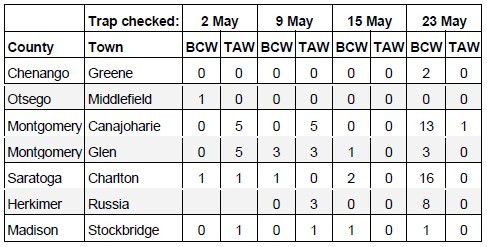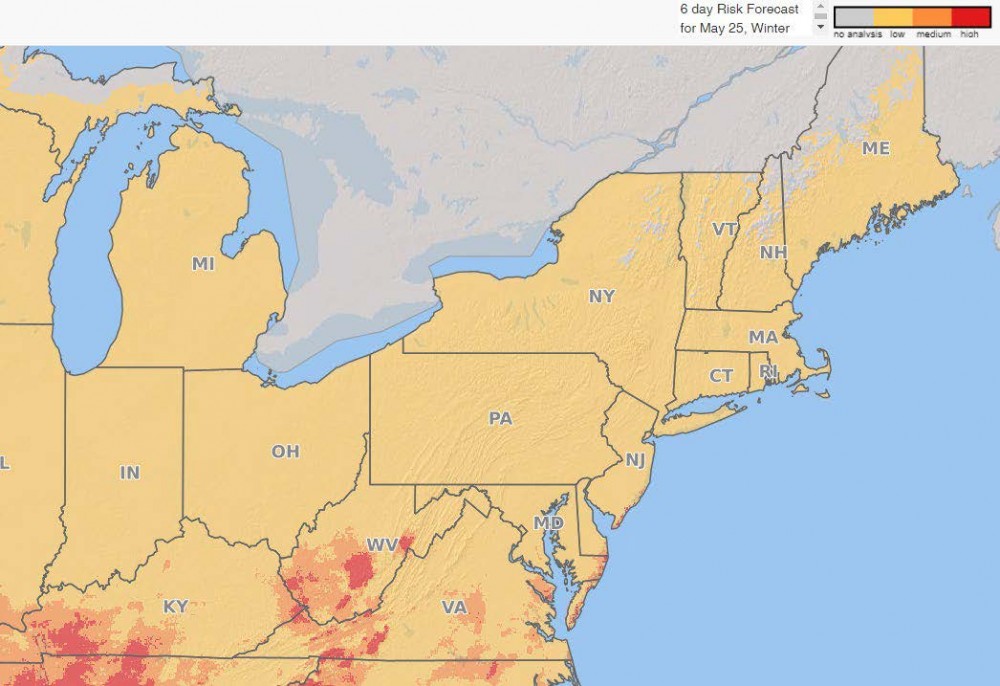Field Crop Update, May 25, 2023
Erik Smith, Area Field Crop Specialist
Central New York Dairy and Field Crops
1. Field Observations
Most hay fields have been taken for first cutting, though yields have suffered from the dry weather. Resist the urge to delay forage harvest to get more tonnage! While you may get higher yield, the feed value and digestibility will more than cancel out what yield you may gain by waiting.
Corn and soybeans are up and out of the ground in places where they were planted in the second and third weeks of the month, though more than a few no-till folks had to wait until last weekend's rainfall to break through the hard ground. A few fields in Central NY were planted in April, but most have been planted over the last 3 - 3.5 weeks. Cutworm numbers have begun to increase (see Section 3), so be sure to monitor your young seedlings for damage over the next few weeks.
The next ten days look warm and dry, so our flowering winter grains should be in great shape with regards to disease. There have been reports of cereal leaf beetle outbreaks in Western NY, so be on the lookout.
2. Growing Degree Days (See: Climate Smart Farming Growing Degree Day Calculator)
Growing degree days (GDD) are calculated by taking the average daily temperature and subtracting the base temperature for development of a given organism ((High + Low)/2 - base temp = GDD). For corn silage, we are using base 50/86, as corn development starts at 50 degrees F and ceases above 86. Check your location and planting date:


3. Pest and disease monitoring
This year we will again monitor several pests of corn using pheromone-baited traps. We monitor black cutworm (BCW) and TAW populations first, then transition to BCW and TAW through the middle part of the season, and we may eventually track fall armyworm (FAW) at some point this year as well.
Black cutworm (BCW)
Western bean cutworm (WBC)
True armyworm (TAW)
Here's what we have so far:

As winter grains begin and continue to flower, now would be the time to decide whether to protect crops from fusarium head blight. According to the Fusarium Risk Tool, the risk in our region is currently low:

Upcoming Events
New York State Fiber Conference
June 9, 2024
Bouckville, NY
Theme for this year: Quality Matters
Announcements
Cash Rent and Custom Harvest Survey
To date, there is limited information available about rental rates and fees for crop harvesting. Farms can use this valuable information for their farm business planning to help improve decision making and profitability.Farmers Can Join MeatSuite For Free!
MeatSuite.com is a free resource provided by Cornell University where NY meat farmers can create a farm profile and list their bulk (wholes, halves, quarters) and bundled (i.e. Grilling Bundle) meat products.Why should farmers join?
1. It's free and easy!
2. Connect with more local customers. In the past year the MeatSuite.com farm directory had 8,300 visits from New York consumers. Farm profiles get as many as 25 views per month from potential local customers. We also spotlight MeatSuite farms on social media and bring attention and purchases to farms through highlights and giveaways.
How do I join?
Farmers can visit https://www.meatsuite.com/farmers/ to create a free farm profile. You must list at least one product for your farm's profile to go live. You'll also have access to Cornell's free Meat Price Calculator, a helpful tool for pricing your meat to make a profit.
While you're on MeatSuite, check out the "Creating Consumer-Friendly Bulk Meats" publication on the log-in page. It has tips on how to create bulk meat products that are easier for first-time buyers to say "yes" to.
If you have any questions as you create your farm profile or products, we're here to help! Please email Matt LeRoux at mnl28@cornell.edu.




